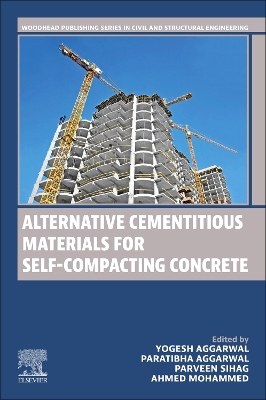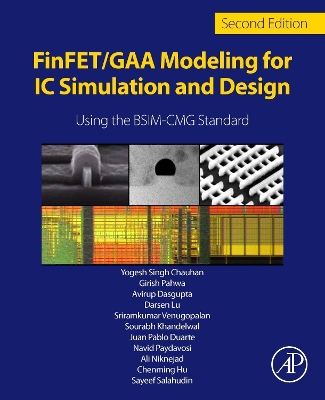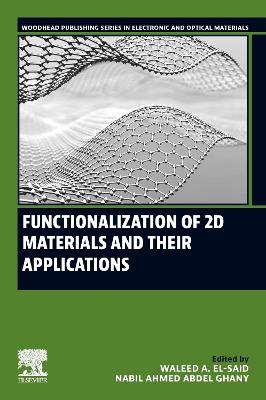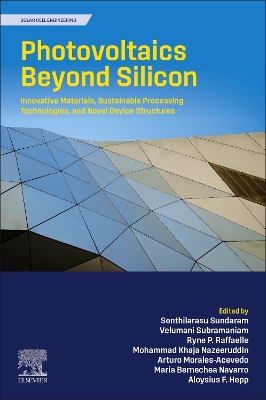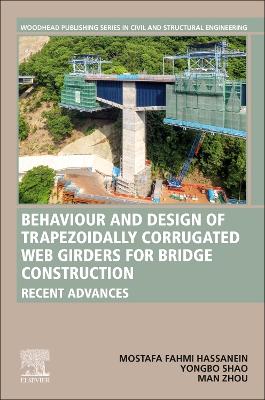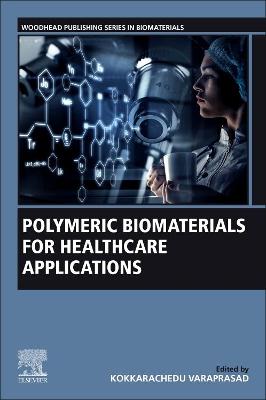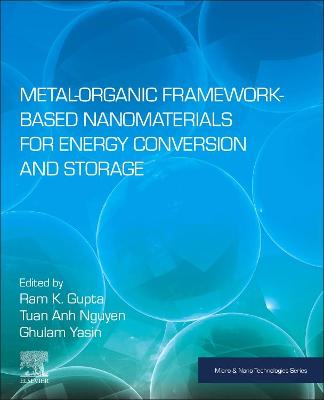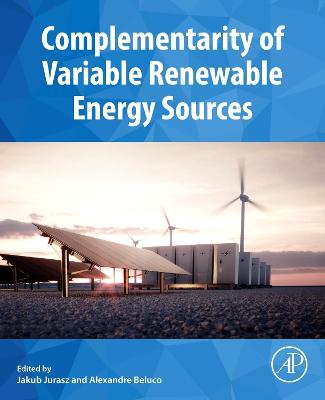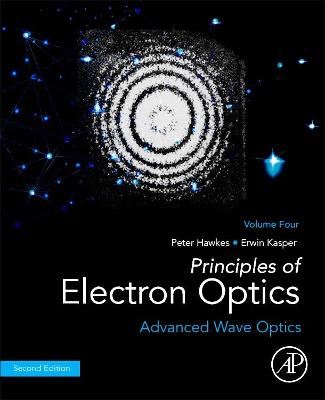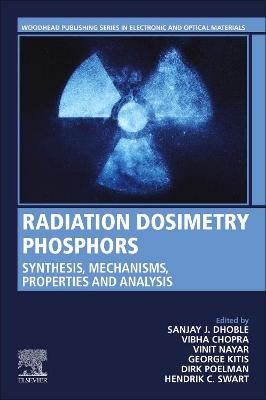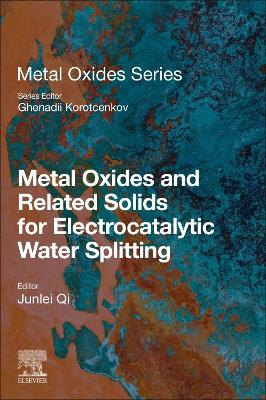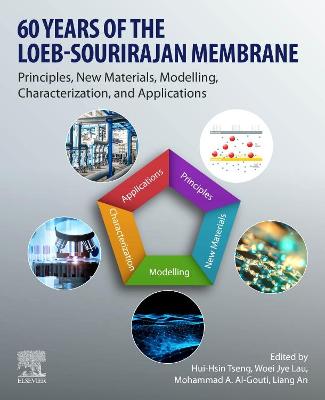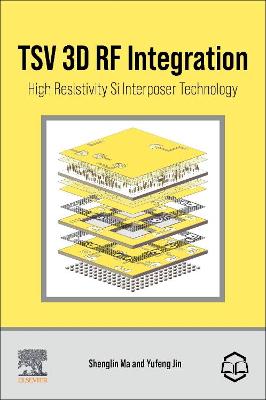Crack Analysis in Structural Concrete
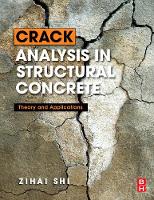 -10%
portes grátis
-10%
portes grátis
Crack Analysis in Structural Concrete
Theory and Applications
Shi, Zihai
Elsevier Science & Technology
07/2009
344
Dura
Inglês
9780750684460
15 a 20 dias
840
CHAPTER 1 Introduction
1.1 Aims of the Book
1.2 Multiple-Crack Problems
1.3 Mixed-Mode Crack Problems
1.4 Crack Interaction and Localization
1.5 Failure Mode and the Maximum Load
1.6 Outline of this Book
References
CHAPTER 2 Linear Elastic and Nonlinear Fracture Mechanics
2.1 Elastic Crack-Tip Fields
2.1.1 Equations of Elasticity and Airy Stress Function
2.1.2 The Williams Solution of Elastic Stress Fields at the Crack Tip
2.1.3 The Complex Stress Function Approach to Elastic Stress Fields at the Crack Tip
2.2 Stress Intensity Factor and K-Controlled Crack-Tip Fields
2.3 The Energy Principles
2.3.1 The Griffith Fracture Theory
2.3.2 The Energy Release Rate G
2.3.3 Relationship between K and G
2.3.4 The Criterion for Crack Propagation
2.4 Plastic Zone Theories at Crack Tip
2.4.1 The Irwin Plastic Zone Corrections
2.4.2 Cohesive Zone Models by Dugdale and Barenblatt
2.5 Fracture Process Zone and Tension-Softening Phenomenon in Concrete
2.6 Fracture Energy GF and Tension-Softening Law in Concrete
2.6.1 Fracture Energy GF
2.6.2 Tension-Softening Law
References
CHAPTER 3 The Fictitious Crack Model and its Numerical Implementation
3.1 Introduction
3.2 Hillerborg and Colleagues' Fictitious Crack Model
3.2.1 Modeling Concept
3.2.2 Numerical Formulation by Petersson's Influence Function Method
3.3 The Principle of Superposition
3.4 The Reciprocity Principle
3.5 The Singularity Issue
3.6 Crack Path Modeling with Dual Nodes
3.7 The Remeshing Scheme for an Arbitrary Crack Path
3.8 The Solution Scheme for Incremental Stress Analysis
References
CHAPTER 4 Extended Fictitious Crack Model for Multiple-Crack Analysis
4.1 Introduction
4.2 Core Issues and Solution Strategy
4.3 Numerical Formulation of a Single-Crack Problem
4.4 Numerical Formulation of a Multiple-Crack Problem
4.5 Crack Analysis of a Simple Beam under Bending
4.5.1 Crack Analysis with a Fixed Crack Path
4.5.2 Crack Analysis with a Curvilinear Crack Path
4.6 Crack Analysis of a Fracture Test of a Real-Size Tunnel-Lining Specimen
4.6.1 Fracture Test on a Tunnel-Lining Specimen
4.6.2 Crack Analysis with a Half-FE-Model
4.6.3 Crack Analysis with a Full-FE-Model
4.7 Crack Analysis of a Scale-Model Test of a Gravity Dam by Carpinteri and Colleagues
4.7.1 Background
4.7.2 Model I: Single-Crack Propagation
4.7.3 Model II: Multiple-Crack Propagation
4.7.4 Model III: Multiple-Crack Propagation
References
CHAPTER 5 Crack Interaction and Localization
5.1 Introduction
5.2 Coefficient of Interaction
5.2.1 Crack Equations and the Source of Crack Interaction
5.2.2 Coefficient of Interaction and Principal Tip Force Coefficient
5.3 Crack Interactions in Notched Concrete Beams under Four-Point Bending
5.3.1 Beams with Small Notches
5.3.2 Beams with Both Small and Large Notches
5.4 Crack Interactions in Tunnel Linings
5.5 Characteristics of Crack Interactions with One and Multiple Tension Zones
References
CHAPTER 6 Failure Modes and Maximum Loads of Notched Concrete Beams
6.1 Introduction
6.2 Numerical Analysis of Notched Beams under Various Load Conditions
6.2.1 Maximum Loads with Monotonic Loadings
6.2.2 Maximum Load Increase with Higher Density of Initial Notches
6.2.3 Maximum Loads with Alternative Loadings
6.3 Critical Initial Notch and Its Influence on Failure Mode and the Maximum Load
6.4 Experimental Verifications on Relationships between Failure Modes and the Maximum Loads
6.4.1 Four-Point Bending Tests
6.4.2 Numerical Analyses
6.5 Engineering Implications
References
CHAPTER 7 Mixed-Mode Fracture
7.1 Introduction
7.2 Modeling of Cohesive Forces in the FPZ
7.3 Reformulation of FCM and EFCM for Mixed-Mode Fracture
7.3.1 FCM for Mixed-Mode Fracture
7.3.2 EFCM for Mixed-Mode Fracture
7.4 Mode-II Fracture Energy GF II
7.5 Numerical Studies of Arrea and Ingraffea's Single-Notched Shear Beam
7.5.1 Parametric Studies with Five Shear-COD Relations
7.5.2 Parametric Studies on Mode-II Fracture Energy with Three Shear-COD Relations
7.6 Numerical Studies of a Scale-Model Test of a Gravity Dam
References
CHAPTER 8 Applications: Pseudoshell Model for Crack Analysis of Tunnel Linings
8.1 Introduction
8.2 Pseudoshell Model
8.2.1 Modeling Concept
8.2.2 Numerical Formulation
8.2.3 Parametric Studies on Uniqueness of Solutions on Tunnel Deformation
8.3 Evaluation of Ground Pressure Based on the Quasi Loosening Zone Model
8.4 Numerical Analysis of an Aging Waterway Tunnel (Case A-1) Compared with a Soil Mechanics Approach
8.4.1 Background
8.4.2 Numerical Analysis by Adachi-Oka Model
8.4.3 Numerical Analysis by the Pseudoshell Model
8.4.4 Evaluation of Ground Pressure
8.5 Case Studies of Two Aging Waterway Tunnels
8.5.1 Power Plant B (Horseshoe Type): Site B-1
8.5.2 Power Plant B (Horseshoe Type): Site B-2
8.5.3 Power Plant B (Horseshoe Type): Site B-3
8.5.4 Power Plant C (Calash Type): Site C-1
8.6 Development of Database for Evaluation of Ground Pressure Based on the CMOD
8.6.1 Selection of Influential Factors and Cases of Study
8.6.2 Relations between Cross-Sectional Deformation and the CMOD
8.6.3 Relations between Pressure Load and Cross-Sectional Deformation
8.6.4 Two-Step Procedure for Determining External Loads by the CMOD and Development of Database
References
CHAPTER 9 Computer Program for Mode-I Type Crack Analysis inn Concrete Using EFCM (CAIC-M1.FOR)
9.1 Overview of the Program
9.2 Structure of the Program
9.3 Main Rules
9.4 Program List
9.5 Selected Examples Illustrating the Usage of the Program
9.5.1 Crack Analysis of Notched Beam
9.5.2 Crack Analysis of Scale Model Dam
9.5.3 Crack Analysis of Tunnel Lining
Reference
CHAPTER 10 Computer Program for Mixed-Mode Type Crack Analysis in Concrete Using EFCM (CAIC-M12.FOR)
10.1 Overview of the Program
10.2 Structure of the Program
10.3 Main Rules
10.4 Subroutines with Major Changes
10.4.1 Changes in CAIC-M12.FOR from CAIC-M1.FOR
10.4.2 Subroutines with Major Changes in the Crack Pattern Determination Block (TFORCE)
10.4.3 Subroutines with Major Changes in the Crack Equation Solution Block (EFFECT)
10.4.4 Subroutines with Major Changes in the Main Block (MAINCN)
10.5 Selected Example Illustrating the Usage of the Program
INDEX
CHAPTER 1 Introduction
1.1 Aims of the Book
1.2 Multiple-Crack Problems
1.3 Mixed-Mode Crack Problems
1.4 Crack Interaction and Localization
1.5 Failure Mode and the Maximum Load
1.6 Outline of this Book
References
CHAPTER 2 Linear Elastic and Nonlinear Fracture Mechanics
2.1 Elastic Crack-Tip Fields
2.1.1 Equations of Elasticity and Airy Stress Function
2.1.2 The Williams Solution of Elastic Stress Fields at the Crack Tip
2.1.3 The Complex Stress Function Approach to Elastic Stress Fields at the Crack Tip
2.2 Stress Intensity Factor and K-Controlled Crack-Tip Fields
2.3 The Energy Principles
2.3.1 The Griffith Fracture Theory
2.3.2 The Energy Release Rate G
2.3.3 Relationship between K and G
2.3.4 The Criterion for Crack Propagation
2.4 Plastic Zone Theories at Crack Tip
2.4.1 The Irwin Plastic Zone Corrections
2.4.2 Cohesive Zone Models by Dugdale and Barenblatt
2.5 Fracture Process Zone and Tension-Softening Phenomenon in Concrete
2.6 Fracture Energy GF and Tension-Softening Law in Concrete
2.6.1 Fracture Energy GF
2.6.2 Tension-Softening Law
References
CHAPTER 3 The Fictitious Crack Model and its Numerical Implementation
3.1 Introduction
3.2 Hillerborg and Colleagues' Fictitious Crack Model
3.2.1 Modeling Concept
3.2.2 Numerical Formulation by Petersson's Influence Function Method
3.3 The Principle of Superposition
3.4 The Reciprocity Principle
3.5 The Singularity Issue
3.6 Crack Path Modeling with Dual Nodes
3.7 The Remeshing Scheme for an Arbitrary Crack Path
3.8 The Solution Scheme for Incremental Stress Analysis
References
CHAPTER 4 Extended Fictitious Crack Model for Multiple-Crack Analysis
4.1 Introduction
4.2 Core Issues and Solution Strategy
4.3 Numerical Formulation of a Single-Crack Problem
4.4 Numerical Formulation of a Multiple-Crack Problem
4.5 Crack Analysis of a Simple Beam under Bending
4.5.1 Crack Analysis with a Fixed Crack Path
4.5.2 Crack Analysis with a Curvilinear Crack Path
4.6 Crack Analysis of a Fracture Test of a Real-Size Tunnel-Lining Specimen
4.6.1 Fracture Test on a Tunnel-Lining Specimen
4.6.2 Crack Analysis with a Half-FE-Model
4.6.3 Crack Analysis with a Full-FE-Model
4.7 Crack Analysis of a Scale-Model Test of a Gravity Dam by Carpinteri and Colleagues
4.7.1 Background
4.7.2 Model I: Single-Crack Propagation
4.7.3 Model II: Multiple-Crack Propagation
4.7.4 Model III: Multiple-Crack Propagation
References
CHAPTER 5 Crack Interaction and Localization
5.1 Introduction
5.2 Coefficient of Interaction
5.2.1 Crack Equations and the Source of Crack Interaction
5.2.2 Coefficient of Interaction and Principal Tip Force Coefficient
5.3 Crack Interactions in Notched Concrete Beams under Four-Point Bending
5.3.1 Beams with Small Notches
5.3.2 Beams with Both Small and Large Notches
5.4 Crack Interactions in Tunnel Linings
5.5 Characteristics of Crack Interactions with One and Multiple Tension Zones
References
CHAPTER 6 Failure Modes and Maximum Loads of Notched Concrete Beams
6.1 Introduction
6.2 Numerical Analysis of Notched Beams under Various Load Conditions
6.2.1 Maximum Loads with Monotonic Loadings
6.2.2 Maximum Load Increase with Higher Density of Initial Notches
6.2.3 Maximum Loads with Alternative Loadings
6.3 Critical Initial Notch and Its Influence on Failure Mode and the Maximum Load
6.4 Experimental Verifications on Relationships between Failure Modes and the Maximum Loads
6.4.1 Four-Point Bending Tests
6.4.2 Numerical Analyses
6.5 Engineering Implications
References
CHAPTER 7 Mixed-Mode Fracture
7.1 Introduction
7.2 Modeling of Cohesive Forces in the FPZ
7.3 Reformulation of FCM and EFCM for Mixed-Mode Fracture
7.3.1 FCM for Mixed-Mode Fracture
7.3.2 EFCM for Mixed-Mode Fracture
7.4 Mode-II Fracture Energy GF II
7.5 Numerical Studies of Arrea and Ingraffea's Single-Notched Shear Beam
7.5.1 Parametric Studies with Five Shear-COD Relations
7.5.2 Parametric Studies on Mode-II Fracture Energy with Three Shear-COD Relations
7.6 Numerical Studies of a Scale-Model Test of a Gravity Dam
References
CHAPTER 8 Applications: Pseudoshell Model for Crack Analysis of Tunnel Linings
8.1 Introduction
8.2 Pseudoshell Model
8.2.1 Modeling Concept
8.2.2 Numerical Formulation
8.2.3 Parametric Studies on Uniqueness of Solutions on Tunnel Deformation
8.3 Evaluation of Ground Pressure Based on the Quasi Loosening Zone Model
8.4 Numerical Analysis of an Aging Waterway Tunnel (Case A-1) Compared with a Soil Mechanics Approach
8.4.1 Background
8.4.2 Numerical Analysis by Adachi-Oka Model
8.4.3 Numerical Analysis by the Pseudoshell Model
8.4.4 Evaluation of Ground Pressure
8.5 Case Studies of Two Aging Waterway Tunnels
8.5.1 Power Plant B (Horseshoe Type): Site B-1
8.5.2 Power Plant B (Horseshoe Type): Site B-2
8.5.3 Power Plant B (Horseshoe Type): Site B-3
8.5.4 Power Plant C (Calash Type): Site C-1
8.6 Development of Database for Evaluation of Ground Pressure Based on the CMOD
8.6.1 Selection of Influential Factors and Cases of Study
8.6.2 Relations between Cross-Sectional Deformation and the CMOD
8.6.3 Relations between Pressure Load and Cross-Sectional Deformation
8.6.4 Two-Step Procedure for Determining External Loads by the CMOD and Development of Database
References
CHAPTER 9 Computer Program for Mode-I Type Crack Analysis inn Concrete Using EFCM (CAIC-M1.FOR)
9.1 Overview of the Program
9.2 Structure of the Program
9.3 Main Rules
9.4 Program List
9.5 Selected Examples Illustrating the Usage of the Program
9.5.1 Crack Analysis of Notched Beam
9.5.2 Crack Analysis of Scale Model Dam
9.5.3 Crack Analysis of Tunnel Lining
Reference
CHAPTER 10 Computer Program for Mixed-Mode Type Crack Analysis in Concrete Using EFCM (CAIC-M12.FOR)
10.1 Overview of the Program
10.2 Structure of the Program
10.3 Main Rules
10.4 Subroutines with Major Changes
10.4.1 Changes in CAIC-M12.FOR from CAIC-M1.FOR
10.4.2 Subroutines with Major Changes in the Crack Pattern Determination Block (TFORCE)
10.4.3 Subroutines with Major Changes in the Crack Equation Solution Block (EFFECT)
10.4.4 Subroutines with Major Changes in the Main Block (MAINCN)
10.5 Selected Example Illustrating the Usage of the Program
INDEX

